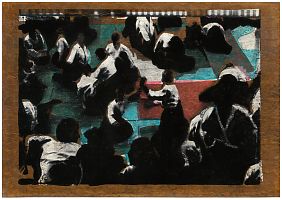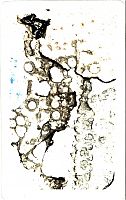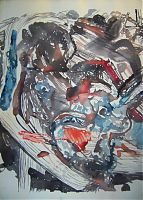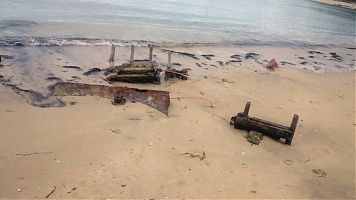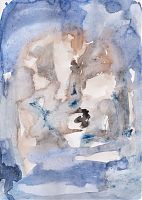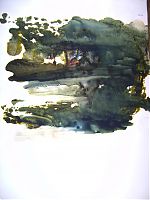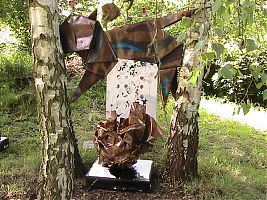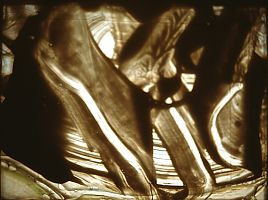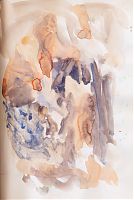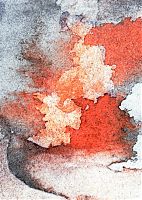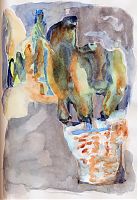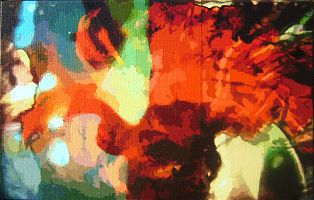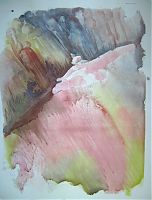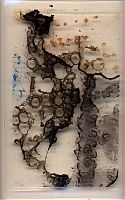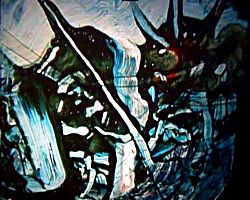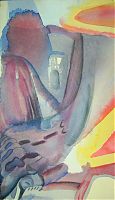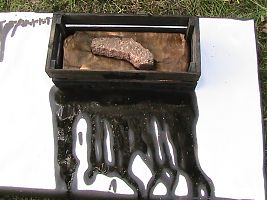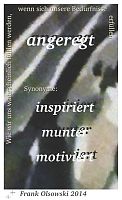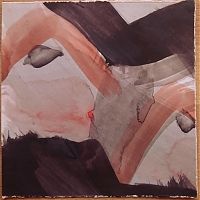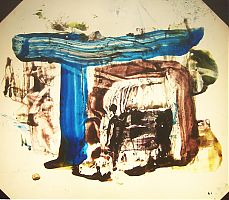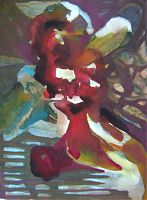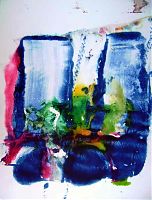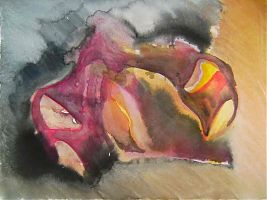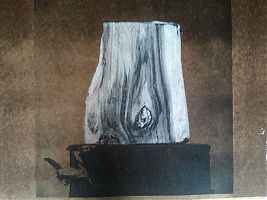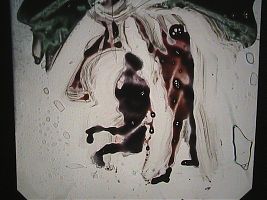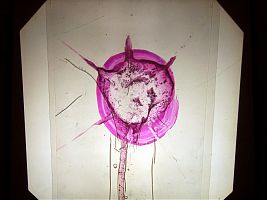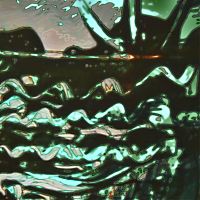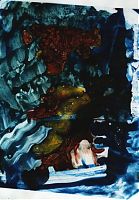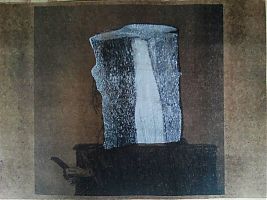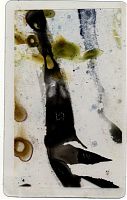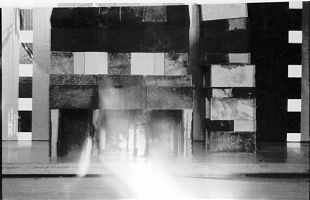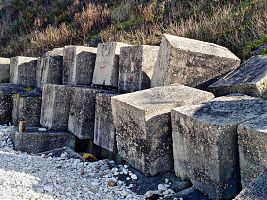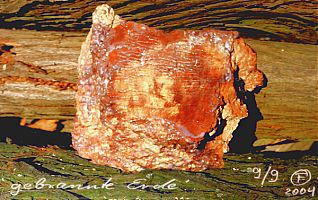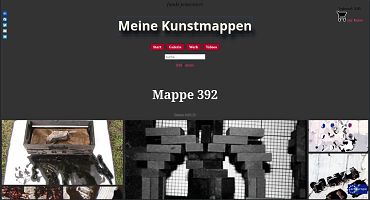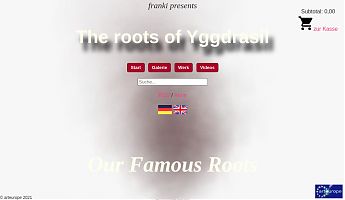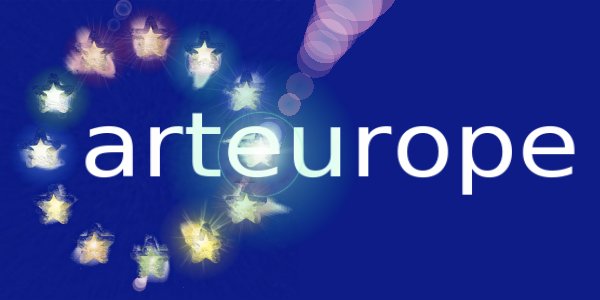Picture: Narrativ
Datum
Connect the dots
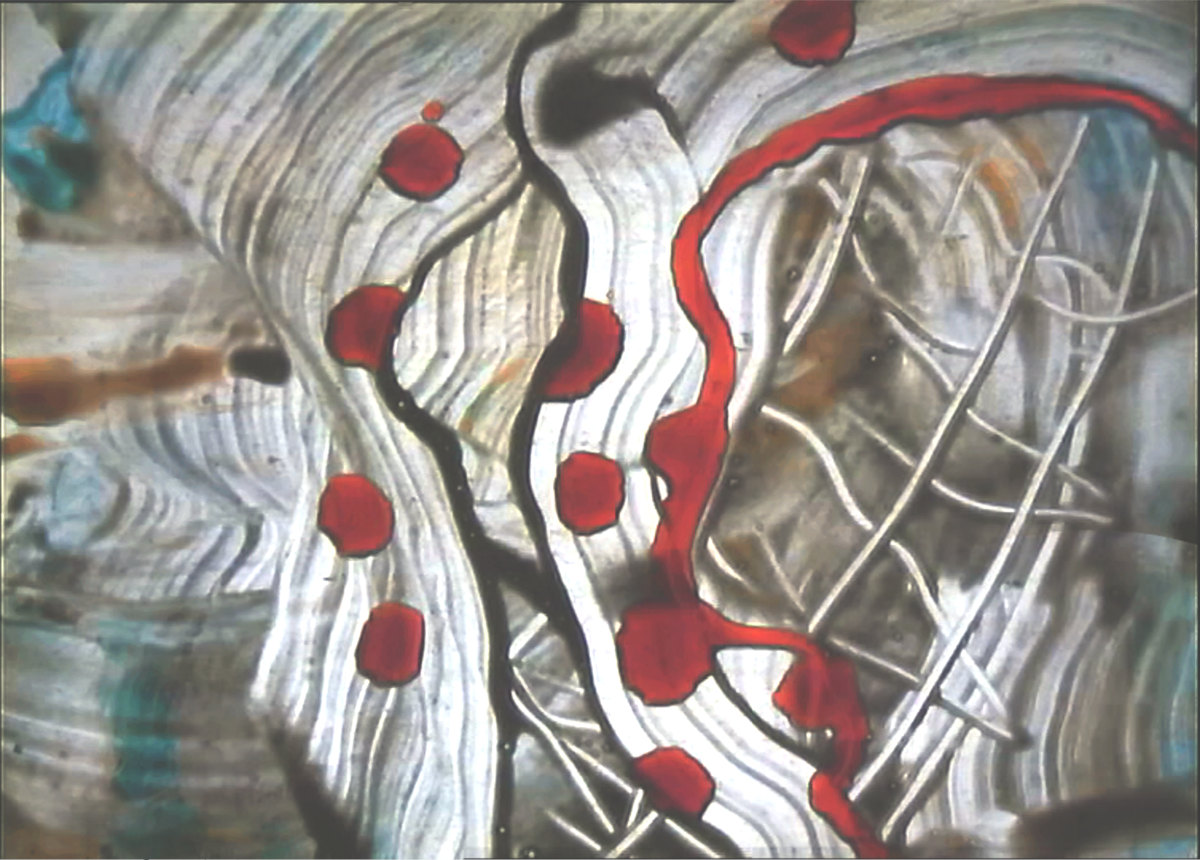
Narrativ - Stacheldraht im Kopf, Lightpaintinfoto aus einer Performance, aufskaliert als Druck, Zülpich 2007
The image was created during a light painting trial session. Compositions were created in relatively quick succession, which come together to form an interpretation/meaning. This painting belongs to the series Niflungen, the accompanying video is called Niflungenbass.
I was interested in the seemingly „involuntary“ projections that take hold of us from an early age and often become „appendages“, „narratives“ or even constricting „frames“ in our consciousness. Our brains have no way of rejecting incoming projections or throwing them out afterwards. Inside is inside – advertising likes to take advantage of this, but so does indoctrination, public relations or propaganda.
The resulting image can only be seen for a short time before it is blurred and a new composition is created.
The basic idea behind Niflungen picks up on historical projections of Roman influence on our society.
Here in Zülpich, formerly known as Tolbiacum, many people are particularly proud of the Roman past. When people talk about it, they always use the same vocabulary and sayings, at some point the words aqueduct and bathhouses always come up and the conversation often ends with a disparaging remark against their own cultural development: …the Germanic tribes took us from the trees. What would we have done without the Romans?
When I was working on this performance, I had not yet penetrated the topic as much as I have today – 15 years later. What struck me at the time, however, was that such conversations, as different as my interlocutors in Zülpich had been, always took place in the same way and were therefore more likely to be a socio-political, indoctrinated projection with a self-perpetuating, generative character than the truth. It is basically a historical self-denial of one’s own cultural values, which must have existed before the criminal invasion of paid thugs.
A conversation in a beer garden turned out to be striking and like a starting signal for my own research. After, as usual, the words aqueducts and bathhouses were mentioned, I sacrilegiously interrupted the flow with the interjection that the Germanic tribes must have had their own culture – the result was an angry uprising of several middle-aged Zülpichers, it got loud, condescending, the table shook and the beer in the glasses spilled over.
I wanted to find out more without having to become a local historian of Roman „whatever“. What I was looking for were clues, stories and songs from that time that could give me an understanding of the changes in the social life of my ancestors after they were forced to follow the rules of foreign rule. So I wasn’t interested in examining ancient documents or other finds from the period, but in finding expressions of emotion. According to our scholastic view of history, the comfortable life in a safer, more comfortable and richer, progressive Roman culture should have manifested itself in stories and songs that had been handed down, at least that was my assumption and also the general conviction of all those with whom I was able to talk about this subject.
Shortly after this escalating incident in the beer garden, I found an interesting article from Efodon?, a website that deals with historical events and their oddities. In a short essay, a professor described the breakdown of old place names, as they are named in the Scandinavian Thidrekssage and are said to have changed due to sound shifts. To his great surprise, he found an area in Germany where these transferred place names were actually used, it is mainly the area between the Jülich Börde, Bonn, Koblenz, up to the Moselle, Trier, the Eifel and part of the Ardennes. We all know the saga under the title „The Song of the Nibelungs“ – there are several different copies. On the one hand, there were legendary tales with dwarves and dragons, but there were also manuscripts that read more like a sober police report. We are talking about Mr. Schaumburg, who also wrote several books on the subject.
Far be it from me to delve deeply into the scholarly discussion of the various manuscripts, but the „outcry“ of many experts against Schaumburg’s theses alone astounded me. As we all learned in school, the Song of the Nibelungs is an early medieval, primarily fictional verse narrative set between Worms, the Danube region, Iceland and Hungary. Schaumburg shows, however, that the areas described refer to the Eifel as far as Lower Saxony, the Lower Rhine and Friesland, distances that were also possible with the transportation system of the time, namely horses, in the periods on which it is based, making it one of the few traditions of Germanic history. I read the various copies, which, according to the currently agreed chronology, are dated from the middle of the 6th century to the end of the 7th century.
The last battle and the greatest battle of the Romans is said to have been fought on the Catalaunian fields against the Huns in 452 A.D. The Western Roman Empire reared its head again, but is then said to have crumbled piece by piece, it is the time of the alleged „migrations of peoples“ – yes, I have become very careful now and don’t just take anything from history books – with good reason.
The Niflungen sagas therefore began about 100 years later. Assuming that power structures do not disappear overnight, I would assume that these structures were still influential two generations after 452, albeit with a steady decline, and that new rulers were only able to establish themselves around 80 years after the pompous battle. However, isolated island communities with farmsteads and fortifications that upheld the supposedly progressive Roman culture were still to be found around Colonia/Cologne after the year 550. But nowhere in the texts or verses of the recorded songs does anything about Romans appear, as if they had never existed. Strange.
At the time, I came to the conclusion that we are primarily dealing with cultural appropriation, which was supplemented with foreign techniques and modes of expression brought from the Mediterranean regions, albeit to a much lesser extent than the people of Zülpich can imagine, namely with aqueducts and a few bathhouses. The narrative of Roman times certainly has its true core, but what is projected into the little heads in our schools is nonsense. The very idea that a culture would have poured into another country, like a large nation today, is simply nonsense. As always, the conquerors were concerned with natural resources and thus also with creating a supply structure that was needed to extract and secure the treasures. If you contrast the common projection of a superior Roman culture that has been drummed into us with the projection of an ancient, greedy conglomerate with the brand name Rome, just as we know the behavior of globally positioned conglomerates in militarily weaker countries today, then you quickly realize which of the two must be more accurate.
The Roman history that has been „passed on“ to us is an agreement between historians and, based on these agreements, everything that is found is classified, everything else that contradicts this is declared a forgery or disposed of immediately. I have also discovered this.
You are free to allow this train of thought and then search for it. But as long as you only allow the Roman culture projected into us, you will only find something about it.
According to my latest findings, historiography is quite down-to-earth from the mid-19th century onwards, but then becomes increasingly obscured until the 17th century. There are gaps in the documentation going back to the 16th century, but what happened before that, when exactly and in what period are mainly agreements between historians, created to safeguard the prevailing structures of the present. This projection conveys to the people of Zülpich that they have been given the statics of their cultural heritage as a gift from outside.
The first picture in the series is called „Head“, the second „Narrative“ with the hint to connect the dots yourself. It may be that customs, fashion and weapons were different in the past, but people had no different motives and certainly the same natural needs as today.
weitere Artikel zum Thema Niflungen
